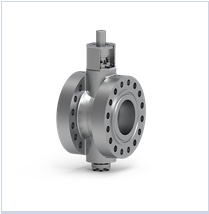19-02-2013
Fluor awarded chemicals project for BASF in germany
Fluor Corporation announced today that it has secured a contract for engineering, procurement and construction management (EPCM) services for BASF’s toluene diisocyanate (TDI) Complex project at BASF’s site in Ludwigshafen, Germany. Fluor booked the undisclosed value into backlog in the fourth quarter of 2012.
The single-train, 300,000 metric tons-per-year plant will produce TDI and expand additional plants as precursors for polyurethanes at the BASF site in Ludwigshafen. Production is scheduled to begin in the fourth quarter of 2014. Fluor has been involved in the project since 2011 performing support services for both the pre-front-end engineering and design (pre-FEED) and the FEED work for this project. TDI is a key component used for polyurethane foams. To a large extent, it is used in the automotive industry (e.g., seating cushion and interior applications) as well as in the furniture segment (e.g., flexible foams for mattresses, cushions or wood coating).
“Fluor continues to expand its long resume for the design and construction of new chemicals plants led from our Haarlem operations center,” said Peter Oosterveer, president of Fluor’s Energy & Chemicals Group.
Fluor’s Haarlem, the Netherlands, operations center will lead the project with support from Gliwice, Poland. More than 800 Fluor craft workers are contributing to the construction of the facility expansion.
For more information, please visit www.fluor.com
-
Fluor petrochemicals project recognized as global best by engineering news-record
Fluor Corporation announced today that Engineering News-Record magazine has recognized DowDuPont Materials Science’s new ethylene production facility in Freeport, ...
24-10-2017
-
Fluor awarded petrochemical project expansion contract
Fluor Corporation announced today that it was awarded an engineering, procurement and construction management (EPCM) contract for the utilities, offsites and infrastructure ...
17-10-2017
-
LyondellBasell award engineering and procurement contract to Fluor
Fluor Corporation announced today that it was selected by LyondellBasell, to perform the engineering and procurement for its propylene oxide (PO) and tertiary butyl alcohol ...
09-10-2017
-
Fluor awarded EPCM contract for PETRONAS isononanol chemical plant
Fluor Corporation announced today that it was awarded an engineering, procurement and construction management (EPCM) contract by PETRONAS Refinery and Petrochemical ...
07-08-2017
-
Fluor starts mechanical construction for Dow Chemical project in Freeport
Fluor Corporation has begun the mechanical construction for The Dow Chemical Company’s new ethylene derivative facility in Freeport, Texas. “Having recently ...
15-05-2017
-
Marathon awards Fluor refinery engineering contract for two refineries in Texas
Fluor Corporation announced today that it was selected by a division of Marathon Petroleum Corporation to execute the engineering and procurement scope for a major reconfiguration ...
11-04-2017
-
Fluor completes Dow Chemical’s Ethylene facility on schedule
Fluor Corporation announced today that it has safely finished the mechanical construction of The Dow Chemical Company’s new ethylene production facility in ...
30-03-2017
-
Fluor awarded BiobÃo refinery project in Chile
Fluor Corporation announced today that it was awarded a contract by Empresa Nacional del Petróleo (ENAP) for the engineering, procurement and construction of a ...
04-01-2017
-
Fluor announces award of Sasol oxygen train project in Secunda
Fluor Corporation announced today that it was awarded a contract by Sasol Group Technology, a division of Sasol South Africa (Pty) Ltd, for the engineering, procurement ...
01-11-2016
-
Fluor completes module fabrication for oil sands project
Fluor Corporation announced today that all 358 modules have been fabricated and shipped to the site for its portion of the Fort Hills Energy L.P. oil sands mining project ...
19-10-2016

















